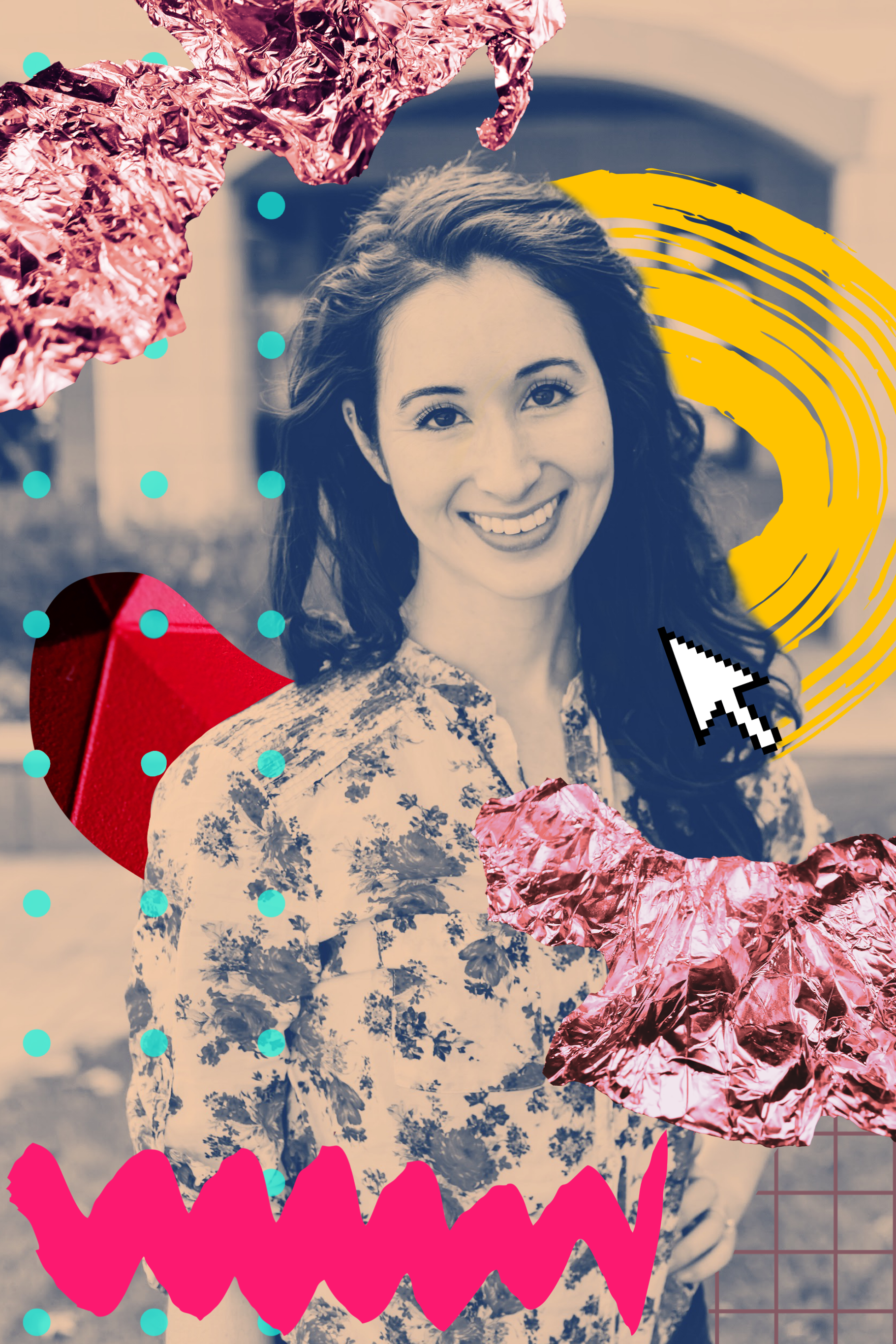She Creates: Catie Cuan
“
Dancing humans and dancing robots!”
Catie Cuan
Catie Cuan is a performer, choreographer, and technologist. She is a PhD Candidate in Mechanical Engineering at Stanford University, with a research focus on dance, robotics, and haptics. She holds a Master's Degree in Mechanical Engineering from Stanford University, a Bachelor's Degree in Business Administration (High Honors) from UC Berkeley, and she was a Visiting Student at the University of Oxford. Catie danced with the Metropolitan Opera Ballet and the Lyric Opera of Chicago, and directed her own dance company from 2012-2017. She is a 2018 TED Resident, 2019 AAAS IF/THEN Ambassador, 2018 ThoughtWorks Arts Resident, and the 2017-2018 Artist-in-Residence at the Robotics, Automation, and Dance Lab at the University of Illinois at Urbana-Champaign. Catie co-founded caali inc., an embodied media company, and was Vice President at Color + Information, a digital agency. Her work has been featured on the PBS Newshour, CBS’ Mission Unstoppable, Engadget, Stanford Magazine, Science Magazine, Forbes Podcasts, and in a TED Talk, titled “Teaching Robots How to Dance”. www.catiecuan.com
What gets you up every morning?
My work is blissful and fun. Challenging and strange. Collaborative and lonely. I feel many highs and lows! It's this combination, and never knowing what will happen next, that gets me up in the morning. One aspect of research and art-making is that you share your work with the public, so I think the opportunity to positively impact others definitely gets me up in the morning, too.
How did you get your start?
When I graduated from UC Berkeley I moved to New York City and immediately knew I had to pursue my lifelong passion of being a professional dancer. Luckily, I booked a number of my dream dance jobs. After years of dancing and choreographing, I started to use technologies in my performance works. I had a number of pivotal residencies at TED, the Robotics Automation and Dance Lab at UIUC, and ThoughtWorks, which allowed me to combine dance and robotics. From there, I wanted a formal structure to my engineering research and decided to apply to graduate school. I'm in my second year of PhD work and continue to make my own artwork and dances. Many individuals in the dance and engineering communities opened these doors for me to be myself and explore unusual combinations of disciplines.
What does a typical workday look like for you?
I go to class, spend a few hours in the lab, attend office hours for help with homework, meet with other researchers/my advisor, and try to make it to ballet when I can! I travel quite a bit, so a typical workday might include any combination of these things from an airplane! My favorite days are when I also get to perform or spend time making movement in the dance studio.
What is your favorite thing about your job?
Asking broad enough, yet poignant, questions. In both art-making and research you are trying to discover or create something that has never been done before. Inquiry is key.
What do you credit your success to?
My family and fiancee encourage me to fail, pivot, and persevere. My mentors challenge me and advise me to think broadly about my contribution to my community.
What advice would you give to someone who wants to follow in your footsteps?
Embrace all of your interests and your intuition. What is something that only you can do?
What is your earliest memory of wanting to pursue a career in STEM?
Going to the learning classrooms at the Lawrence Hall of Science in Berkeley during elementary school. We used to pick up live snakes, jumble magnets, and study the planets. I loved math throughout elementary and middle school but I felt like I didn't have any female role models in STEM. Stereotypes and role models matter even from that age!
What is your super power, the thing you bring to your work every day that sets you apart from the rest?
I am an excellent listener. It's an active practice - listening takes work. And I don't mean listening only for retention, but for subtext and implication. It has changed my whole perception of teams and collaboration.
STEM can be intimidating and difficult to digest by the general public. You’ve found a way to bridge that gap and bring your work to audiences in an accessible way. What’s your secret?
Storytelling! A fundamental form of communication. Conflict, stakes, a beginning, a middle, and an end. It is hard to be passionate about STEM topics if you don't understand how they fit into your identity and daily life. For example, telling a personal story about the positive impacts of robots can transform your thinking, rather than listing the facts about robots' processing speed and physical measurements.
If there’s one small step we can take to get more women involved in STEM, what is it?
Find mentors and be a mentor. All things worth doing are hard, and when your internal compass wanes, it's important to have individuals you trust lift you up and give you guidance.
How important is community to you? How are you fostering a community?
I co-founded an organization at Stanford called Critical Practices Unit. It brings together all disciplines to make creative work which is typically considered non-academic. We've have people from 20+ different departments attend! My hope is it will provide an occasion for people with "fringe" interests to convene and exchange novel ideas.
What do you want to be known for?
Artistry and bravery. Bringing my performance background into the realm of science and engineering. Making those fields legible to each other as best I can. Dancing humans and dancing robots!
College & Major ?
Undergrad: UC Berkeley, Business Administration. Masters: Stanford University, Mechanical Engineering. Ph.D (in progress): Stanford University, Mechanical Engineering.
What are some apps on your phone?
The New Yorker, TodayTix, Philz Coffee, Ocarina.
One piece of Tech you cannot live without?
My laptop...and wireless mouse.

